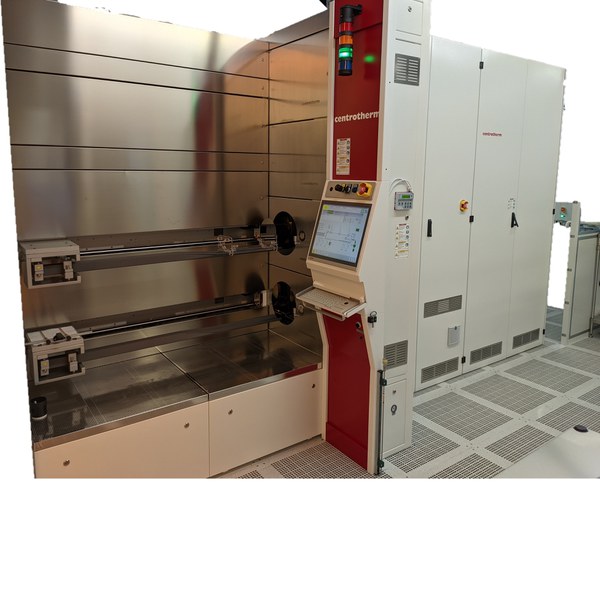New LPCVD (Low Pressure Chemical Vapor Deposition) Tool
Low Pressure Chemical Vapor Deposition (LPCVD) is a type deposition technology that uses heat to initiate a reaction of a precursor gas on the solid substrate. This reaction at the surface is what forms the solid phase material. Low-pressure (LP) is used to decrease any unwanted gas phase reactions and increases the uniformity across the substrate.

For our research on LS (Low Stress) & Stoichiometric Nitride and as well TEOS Oxide we have installed one LPCVD tool from the manufacturer “Centrotherm”. The tool is equipped with two Stack of tubes, managing up to 35 x 4” wafers. It is also compatible for size of 6” and as well for 8” wafers.
TEOS is an abbreviation of Tetraethyl orthosilicate with its molecular formula, Si(OCH2CH3)4.
In LPCVD, TEOS is used to deposit oxide for dielectric materials, isolation layers, hard mask materials and optical waveguides. With a help of inert carrier gas TEOS is delivered in pre-heated reaction chamber between 650 and 850 °C. After TEOS molecules are dissociated and adsorbed onto the wafer surface, the neighbouring ethyl alkyl groups, interact with each other to form stable products, which then detach from the surface and behind a -O-Si-O- link to the surface. Although TEOS is an excellent source of oxygen atoms by itself, adding O2 gas increases the deposition rate. N2 is the most popular choice for the carrier gas.
Low stress nitride is performed at a high ratio of DCS to NH3 flow rates. The consequence of such silicon-enriched deposition is a very low tensile stress. The stress depends mainly on the gas mixing ratio and the process temperature. The processing pressure is typically a few Torr or lower.
Applications: MEMS structures, diffusion barriers, passivation layers, oxidation masks, etch masks, ion implant masks, insulation, encapsulation, mechanical protection, gate dielectrics, optical waveguides, CMP and etch stop layers.

